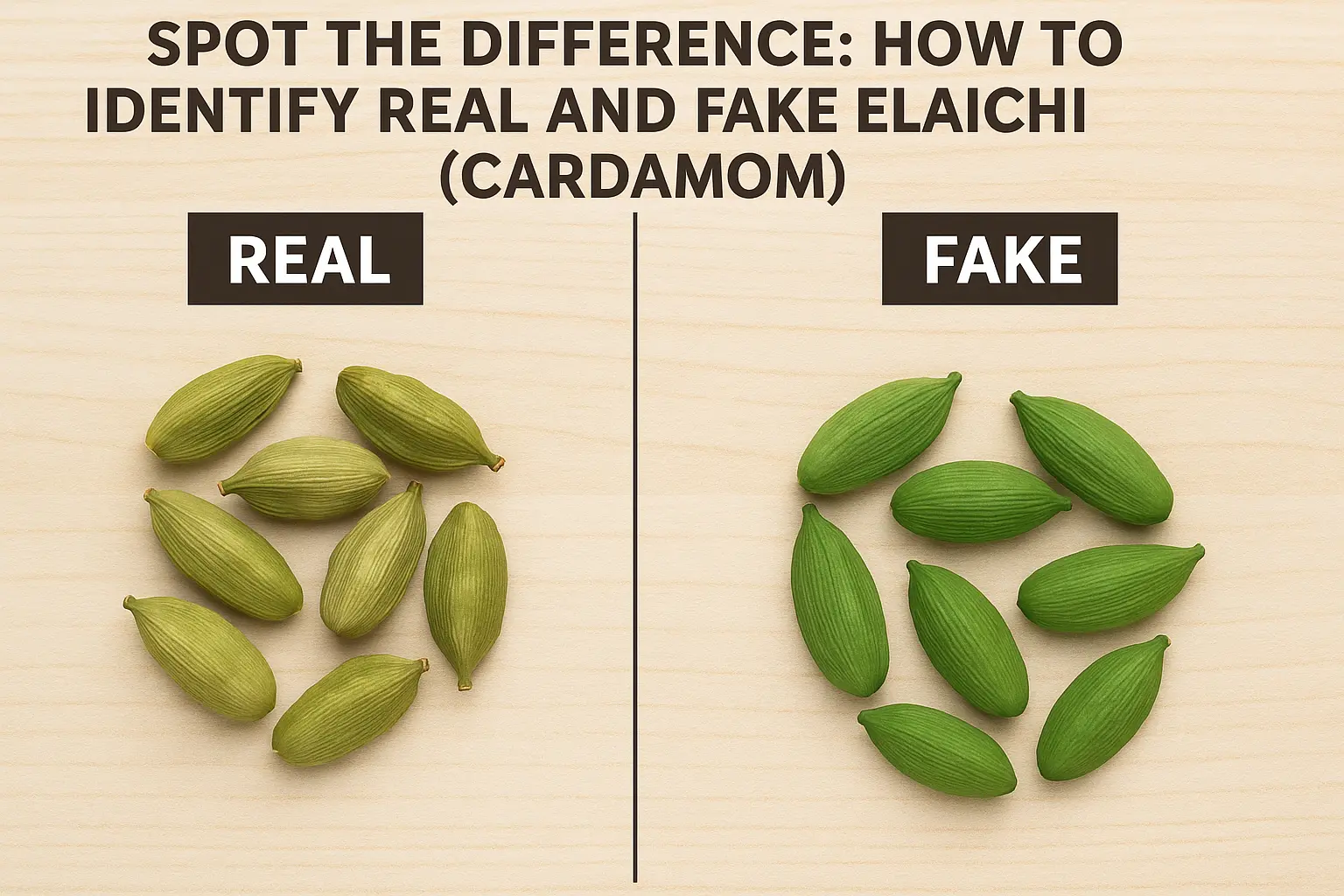Cardamom, commonly known as elaichi, is one of the most valuable and aromatic spices used in Indian kitchens. From masala chai to rich curries and sweets, its flavour is unmatched. However, with rising prices and increasing demand, the market has seen a surge in adulterated or fake cardamom. Consuming such fakes can not only compromise flavour but also pose health risks. Hashtag Magazine tells you how to distinguish real elaichi from the counterfeit ones and what consumers and authorities can do about it.
1. Why Is Elaichi Being Faked?
Cardamom is one of the most expensive spices by weight. High-quality green cardamom from regions like Kerala and Karnataka fetches premium prices. To capitalise on this, unscrupulous traders often mix inferior or dyed cardamom pods, or even entirely fake seeds, into the supply chain. Some even dye old or dried pods green to make them look fresh.
2. How to Identify Real Elaichi
a) Colour and Appearance
- Real elaichi: Natural green, not overly shiny or unnaturally bright. The shade can range from pale green to deep forest green, depending on the region.
- Fake elaichi: Often unnaturally bright or uniform in colour. If pods appear unusually shiny, it may be due to artificial colouring.
b) Smell
- Real elaichi has a strong, sweet, aromatic smell. You’ll recognise it instantly as the typical elaichi fragrance.
- Fake or dyed pods may lack fragrance or smell slightly chemical or artificial.
c) Texture
- Gently press a pod.
- Real pods are firm but may crack slightly to reveal tiny black seeds inside.
- Fake pods may be unusually soft, hollow, or have empty or dried-out interiors.
d) Water Test
- Drop a few pods into a glass of warm water.
- Real elaichi: The pods may sink, and the water may slowly release the natural fragrance.
- Fake or colored elaichi: May float due to hollowing or release a greenish tint indicating artificial dyes.
3. Health Risks of Fake Elaichi
Artificial dyes and chemicals used to make fake elaichi look fresh can be toxic. Continuous consumption may cause:
- Headaches
- Nausea or digestive issues
- Long-term liver or kidney problems in extreme cases
4. What Can Consumers Do?
Buy from Trusted Brands
Purchase elaichi from reputed brands or certified organic sellers. Avoid loose products from unverified sources in local markets.
Check Packaging
Look for FSSAI-certified or organically labelled packaging. Check for harvest and expiry dates.
Do At-Home Tests
Perform simple visual checks and water tests at home. If in doubt, avoid consumption.
Report Adulteration
If you find adulterated spices, report them to local food safety authorities or consumer forums.
5. What’s Being Done About It?
Government Action
Food regulatory authorities, such as the FSSAI (Food Safety and Standards Authority of India), are tightening checks on spice adulteration. Random inspections and lab testing are being conducted, especially in wholesale markets.
Technological Intervention
Modern packaging and sourcing methods, such as QR codes for traceability, are being adopted by ethical spice brands to ensure transparency. Consumers can scan and verify the origin of the product.
Education & Awareness
Consumer awareness campaigns and media coverage have increased, encouraging people to be more mindful of their food sources.
Conclusion
Elaichi is more than just a spice it’s a part of Indian culture, tradition, and cuisine. But in a market where appearance often trumps authenticity, it’s crucial to stay vigilant. By learning to spot the difference between real and fake elaichi and supporting ethical producers, we protect both our health and our heritage. Always remember: a little awareness goes a long way when it comes to what’s on your plate.

























